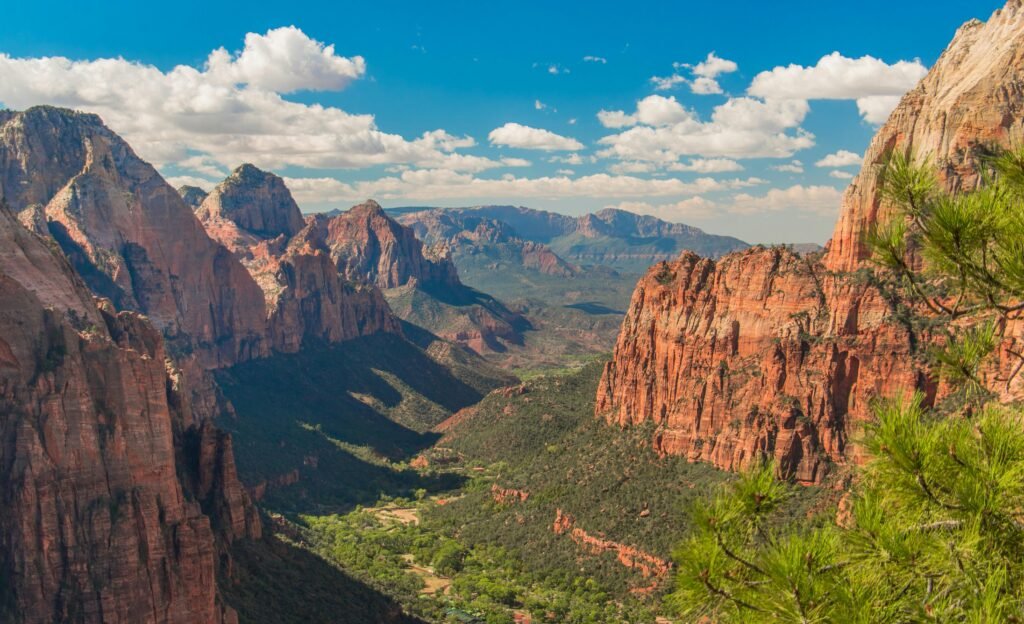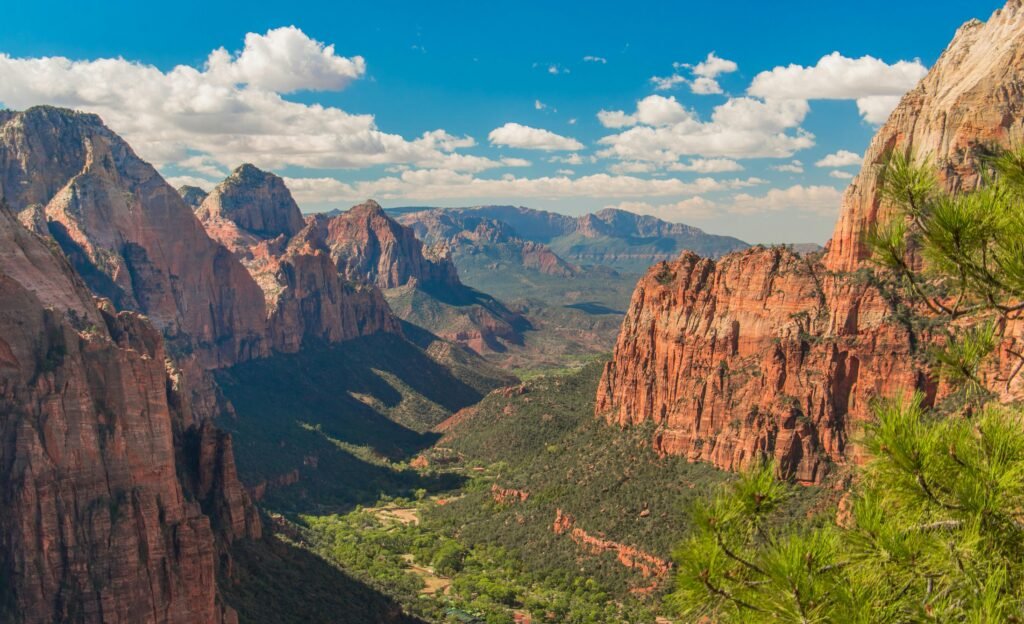Introduction to Wild Asia
Wild Asia encompasses a myriad of diverse ecosystems, rich biodiversity, and vibrant cultures that remain largely unexplored by mainstream tourism. From the majestic peaks of the Himalayas to the dense rainforests of Borneo and the varied terrains of India, this magnificent continent presents a treasure trove of natural wonders. The term ‘Wild Asia’ represents not only the geographic expanse but also the invitation to discover national parks that boast unique wildlife and habitats, often overshadowed by more famous destinations.

Exploring lesser-known national parks allows travelers to immerse themselves in authentic experiences, away from the hustle of crowded tourist hotspots. Parks such as Borneo’s Batang Ai National Park, with its rich dialects of primate species and arrays of flora, reveal the intricate relationships within ecosystems that generally go unnoticed. Nepal, with its stunning landscapes, is home to numerous national parks like Bardiya National Park, a haven for endangered species such as the one-horned rhinoceros and the elusive Bengal tiger. India’s hidden gem, the Nameri National Park, offers not only pristine wilderness but also an opportunity to engage with native cultures and traditions.
These national parks are vital for preserving wildlife, providing refuge for numerous species that face extinction. By promoting tourism in these lesser-known locations, we can contribute to conservation efforts and ensure that these unique ecosystems are protected for future generations. Wild Asia is, therefore, not only a travel destination but a call to engage with nature responsibly and sustainably. In doing so, we foster a deeper connection with our planet and the extraordinary variety of life it harbors.
The Allure of Hidden National Parks

Hidden national parks, often overlooked in favor of more popular destinations, offer a unique opportunity for exploration that goes beyond just natural beauty. These remote areas serve as vital sanctuaries for biodiversity conservation, harboring ecosystems that are crucial for the survival of numerous species. The preservation of such landscapes not only protects flora and fauna but also contributes significantly to scientific research and environmental education. By visiting these lesser-known locations, travelers play an active role in supporting conservation efforts, acknowledging the importance of maintaining fragile habitats.
Moreover, hidden national parks often present an authentic cultural experience. Engaging with local communities can enrich one’s understanding of the land’s history and the traditions that have shaped it. Many remote parks are situated near indigenous populations or small villages where visitors can participate in cultural exchanges. These interactions foster a sense of appreciation for the heritage and values of those who have inhabited these areas for generations. This aspect of travel is increasingly valuable, as it encourages sustainable tourism practices that benefit both the traveler and the local community.
Experiencing untouched nature in these secluded parks offers emotional rewards that are hard to replicate in frequently visited locations. The serenity of a less-trafficked trail, the sound of a babbling brook, or the sighting of a rare species can evoke profound feelings of connection to the natural world. Such immersive experiences can lead to a heightened sense of well-being and promote mental health. Thus, the allure of hidden national parks lies not only in their biodiversity and cultural richness but also in the personal growth and environmental consciousness that they inspire. By stepping off the beaten path, adventurers can uncover the true essence of our planet’s majestic wilderness.
Outstanding Wildlife Sanctuaries in Borneo
Borneo, the third-largest island in the world, is renowned for its remarkable biodiversity and lush ecosystems, making it a prominent destination for wildlife enthusiasts. Among its many national parks, Bako National Park and Kinabalu Park stand out for their rich variety of flora and fauna, offering visitors an unparalleled glimpse into the wonders of nature.
Bako National Park, located in Sarawak, is Borneo’s oldest national park and covers an area of 27 square kilometers. This park is celebrated for its diverse habitats, from mangrove swamps to dipterocarp forests. Visitors to Bako can encounter a range of wildlife, including the elusive proboscis monkey, which is endemic to Borneo. The park’s trails provide access to various ecosystems, making it ideal for hiking and wildlife spotting. To maximize the experience, the best time to visit is during the dry season from June to September when weather conditions are typically more favorable.
Further inland lies Kinabalu Park, a UNESCO World Heritage site known for its stunning mountain vistas and rich biodiversity. This park is home to Mount Kinabalu, the highest peak in Southeast Asia. Kinabalu Park hosts an impressive array of flora, including various orchid species and carnivorous plants. Additionally, travelers may be fortunate enough to encounter species such as the Bornean pygmy elephant, clouded leopard, and a plethora of birds like the Bornean bristlehead. The park remains accessible year-round, although the most popular period for trekking and exploring is from March to October.
Both Bako National Park and Kinabalu Park signify the incredible natural heritage of Borneo, drawing visitors eager to witness the island’s unique wildlife in its native habitat. With proper planning and an understanding of the best seasonal times to visit, travelers can truly appreciate the breathtaking beauty and ecological significance of these wildlife sanctuaries.

Exploring Nepal’s Remote National Parks
Nepal, renowned for its towering peaks and vibrant culture, also harbors some of the most exquisite national parks that remain largely undiscovered by the average traveler. Among these gems are Bardiya National Park and Shey Phoksundo National Park, both showcasing the country’s rich biodiversity and stunning landscapes. These national parks offer unique opportunities for adventure enthusiasts looking to immerse themselves in nature’s untouched beauty.
Bardiya National Park, situated in the remote Terai region, covers an expansive area of over 968 square kilometers. This national park is not only renowned for its diverse ecosystems, but it is also home to the endangered Bengal tiger and the one-horned rhinoceros. Visitors can experience thrilling wildlife safaris, where the chances of spotting such magnificent creatures are quite high. The lush sal forests and riverine ecosystems here provide perfect habitats for an array of wildlife, including elephants, deer, and various bird species, making this park a haven for wildlife enthusiasts and photographers.
Similarly, Shey Phoksundo National Park, located in the Dolpa district, is a breathtaking natural marvel characterized by its pristine lakes and rugged Himalayan terrain. This park is famous for the stunning turquoise waters of Phoksundo Lake, which is the deepest lake in Nepal. Trekking routes in Shey Phoksundo offer panoramic views of snow-capped mountains, making it a renowned destination for trekkers. The trails take adventurers through remote villages, where they can experience the local culture, as well as encounter unique wildlife, including the elusive snow leopard and various species of pheasants.
Choosing to explore these lesser-known parks not only provides travelers with the chance to see extraordinary wildlife, such as the rare Bengal tiger and one-horned rhinoceros, but also instills a sense of adventure in exploring Nepal’s hidden treasures. The remote paths of Bardiya and Shey Phoksundo National Parks invite visitors to connect with nature in a meaningful and impactful way.
India’s Hidden Gems: National Parks to Discover
India is home to an impressive array of biodiversity, yet many of its national parks remain undiscovered by the masses. Among these hidden gems are Nameri National Park and Pakke Wildlife Sanctuary, which offer a unique opportunity for wildlife enthusiasts and nature lovers alike. Nestled in the northeastern state of Assam, Nameri National Park is renowned for its lush vegetation, towering teak trees, and an extensive range of fauna. The park serves as an important habitat for several endangered species, including the rare white-winged duck and a variety of reptiles and amphibians, making it a vital site for biodiversity conservation.
Similarly, Pakke Wildlife Sanctuary, located in Arunachal Pradesh, is celebrated for its unique ecosystems and rich biodiversity. This sanctuary is home to species such as elephants, tigers, and the elusive clouded leopard. With ongoing conservation efforts that include anti-poaching measures and community involvement, both parks are pivotal in maintaining ecological balance while protecting wildlife. These initiatives not only safeguard the flora and fauna but also empower local communities by promoting eco-tourism, providing them with economic opportunities that encourage sustainable practices.
For those seeking to explore these parks, access can be achieved through well-marked routes that start from major transit hubs in Assam and Arunachal Pradesh. However, it is advisable to plan visits between October and April, when the weather is more favorable and wildlife sightings are abundant. Visitors can engage in activities such as guided treks and bird watching, enhancing their understanding of these biodiverse ecosystems. Overall, venturing into these lesser-known national parks not only offers a refreshing perspective on India’s wildlife but also contributes significantly to local conservation efforts and economic development.
Conservation Efforts and Community Involvement
Conservation is a critical element in safeguarding the biodiversity of the unique ecosystems found in wild Asia. In regions such as Borneo, Nepal, and India, various initiatives have been established to protect wildlife and their habitats. These efforts are not only crucial for preserving the rich flora and fauna but also essential for sustaining the livelihoods of local communities.
In Borneo, conservation projects focus on the protection of rainforests, which are home to numerous endangered species, including orangutans and pygmy elephants. Local communities have been integral to these initiatives, often participating in reforestation programs and wildlife monitoring efforts. By engaging locals in conservation strategies, these projects foster a sense of ownership and responsibility, catalyzing a more profound commitment to environmental stewardship.
Similarly, in Nepal, the concept of Community Forestry has emerged as a successful model. This approach empowers local residents to manage forest resources, leading to an impressive recovery of wildlife populations and forest coverage. The integration of local knowledge and resources has proven beneficial, creating a collaborative environment where conservation and traditional practices coexist harmoniously.
In India, various wildlife sanctuaries and national parks are stepping up conservation efforts by involving communities in ecotourism. This approach not only generates income for local populations but also raises awareness about the importance of preserving natural habitats. Positive outcomes have been documented in several regions, showcasing how tourism can support conservation while providing economic benefits to residents.
Success stories from these regions highlight the effectiveness of combining conservation efforts with community involvement. By ensuring that local populations are stakeholders in the preservation process, we can nurture an environment where both wildlife and human development thrive alongside one another. The role of tourism in these conservation endeavors cannot be overstated, as it serves as a powerful tool for fostering an appreciation of these precious ecosystems.
Travel Tips for Visiting Remote National Parks

Exploring remote national parks in Asia can be a rewarding yet challenging adventure. To ensure a seamless experience, proper planning and preparation are essential. One of the most critical aspects involves packing effectively; bring essentials such as lightweight clothing, sturdy walking shoes, sufficient layers for varying weather, a reliable first aid kit, and refillable water bottles. Always check the climate of the specific region you will be visiting to cater your packing list accordingly.
Transportation options can vary significantly depending on the remoteness of the park. Research local transportation methods, including bus services, bike rentals, or private tours. In many cases, travel may require a combination of modes, such as flying to a nearby city followed by a scenic drive. It is advisable to check if the parks offer shuttle services for visitors or if local transport arrangements can be made prior to arrival.
Before embarking on your journey, familiarize yourself with the specific permits or fees associated with each park. Most remote national parks require visitors to obtain permits for entry, camping, or guided tours. It is crucial to acquire these permits in advance, as some parks might have limited accessibility or specific entry times.
Health and safety considerations should not be overlooked when visiting these areas. Always carry insect repellent, sunscreen, and any necessary medications. Additionally, familiarize yourself with the local wildlife and practice safe habits to avoid encounters. It is also wise to leave a detailed itinerary with someone you trust, outlining your planned activities and expected return times.
Lastly, choosing responsible tour operators can enhance your experience while minimizing your ecological footprint. Look for operators committed to sustainable tourism practices, such as promoting conservation efforts and engaging with local communities. Reading reviews and seeking recommendations can provide valuable insights into the credibility of these operators.
Personal Stories From Adventurers
Travelers seeking memorable adventures within the hidden national parks of Asia have countless stories to share, each embodying unique experiences and uncharted interactions. Many adventurers recount their encounters with wildlife that are not found in more popular tourist destinations. For example, one traveler narrated how she spent a week in Bukit Duabelas National Park, Indonesia, where she observed the rare Sumatran elephant in its natural habitat. The sheer size and grace of these majestic creatures left her in awe, illustrating the profound impact of experiencing wildlife in an untouched setting.
Another explorer shared his experience at Nong Bang National Park in Laos, where the dense jungle enveloped him as he trekked to find the elusive Indochinese tiger. While he was unable to spot one, the sounds of the jungle—exotic birds, rustling leaves, and distant roars—made the journey unforgettable. This profound connection with nature strengthened his commitment to wildlife conservation and increased his understanding of the intricate ecosystem that thrives in these less-visited parks.
Interactions with local communities also play a pivotal role in these adventures. One story from a traveler in Phong Nha-Ke Bang National Park in Vietnam highlights the warmth and hospitality of the local people, who shared traditional cooking methods and cultural practices. Through this immersion in daily life, the traveler forged deep connections that not only enriched their experience but also left a lasting understanding of the region’s history and culture.
Visiting lesser-known national parks certainly provides opportunities for personal transformation and adventure. These stories encourage potential travelers to seek out their own paths, reminding them that behind each hidden park lies a world brimming with wildlife, culture, and unforgettable moments. As these adventurers have discovered, the journey into the unknown often yields the most rewarding experiences.
Conclusion: Embrace the Adventure of Wild Asia
In a world where travel often gravitates towards well-trodden paths and famous landmarks, exploring the lesser-known national parks of Asia offers a refreshing alternative. These hidden gems not only house a diverse array of wildlife but also provide unique cultural insights and experiences that are frequently overshadowed by their more popular counterparts. The untouched landscapes of these parks invite adventurers to reconnect with nature and appreciate the beauty of Asia in its unrefined form.
Engaging with these lesser-known national parks is not just about personal enjoyment; it is also an opportunity to support vital conservation efforts. Many of these areas rely on tourism to fund their preservation initiatives and protect the rich biodiversity that thrives within their boundaries. By choosing to explore these lesser-known destinations, travelers contribute to the sustainability of wildlife and the ecosystems that inhabit these regions. Each visit can help foster a greater respect for the environment and promote responsible tourism practices.
Moreover, stepping beyond the familiar tourist trails allows for a more authentic and enriching travel experience. It provides an opportunity to interact with local communities, learn about their customs and traditions, and witness firsthand how these societies coexist with their natural environments. As one immerses in the serene beauty and vibrant ecosystems of Wild Asia, the journey transforms from mere sightseeing into a profound adventure filled with lasting memories.
Calling all aspiring travellers: Consider venturing beyond the popular tourist destinations and delve into the wondrous national parks of Wild Asia. Embrace the adventure, champion conservation, and experience the untamed side of this diverse continent. Each park offers a unique story waiting to be discovered, and your exploration plays a crucial role in preserving these invaluable treasures for future generations.
